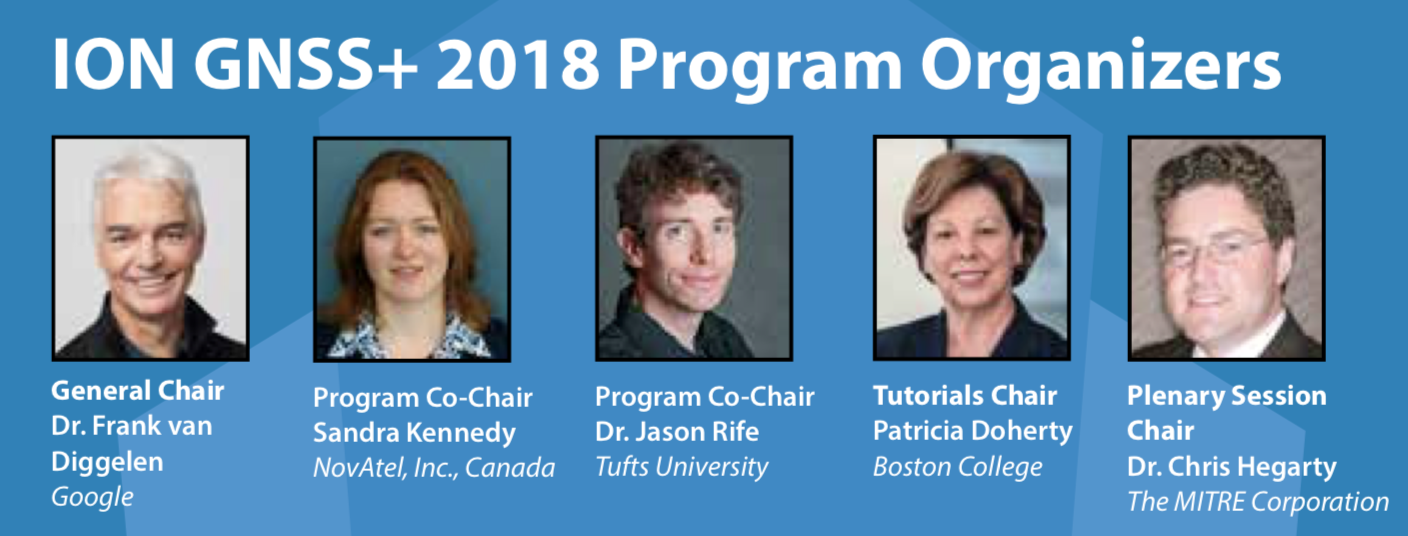As ION GNSS+ 2018 approaches, we are entering the era of GNSS+ for all. All the considerations are at or very near full operational capability; dual frequency and precise spreading codes are available, free, for civilian use; raw measurements, including carrier phase, can be pulled from smartphones; and emergency services can now access the most accurate location available on your phone, indoors and out.
For the second consecutive year, the ION is providing free classes on the Monday of the conference. There is something for everyone: from Celestial Navigation (yes, using the Stars), to introductory GPS, Raw Measurements from phones, Sensors for Personal Navigation, Resilient PNT, and Vision Navigation.
Tuesday is packed: with paid tutorials, and the annual CGSIC (Civil GPS Service Interface Committee) meeting — this is open to all, and a great way to get a head start on the GNSS system status updates. Tuesday ends with the Plenary session, featuring two fascinating talks: “Emergency Location Service in Android”, and “A LiDAR History: From Ship to Air to Space.”
The conference talks run from Wednesday through Friday with seven parallel tracks. The theme of GNSS for all is readily apparent throughout the program. In tracks A, B & C you will find many talks on location for phones, autonomous vehicles, and the ever-popular panel on GNSS systems’ status; as well as sessions on Air, Sea, Land and Indoor location, Augmented Reality, Integrity, and Spectrum Protection — all hot topics in 2018.
Tracks D, E, F & G feature research and peer reviewed papers. Covering many of the same hot topics as A, B & C, but with a more academic focus. Integrity, Autonomy, Multisensor Navigation, and the Environment are prominent. Algorithms and Technology are the themes of tracks F and G, with sessions focused on the always important pursuit of high accuracy, precision, and signal processing.
Through the program, you’ll notice how GNSS has come almost full circle — from a time when we had only a partial GPS constellation and surveyors would work in the middle of the night so they could get enough satellite coverage for centimeter accurate location from carrier phase. We are now entering an era where cell phones have dual-frequency GNSS, and RTK on your phone is imminent. But GNSS is far from the only topic, with Sensor, WiFi, and Visual Navigation … if you’re a Nav Geek, then ION GNSS+ is the only place to be this week. See you there!
Frank van Diggelen,
General Chair






